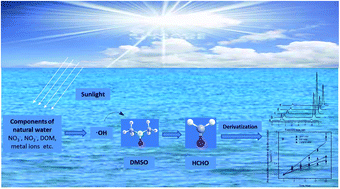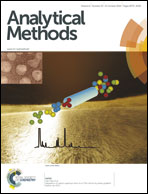Determination of hydroxyl radicals photochemically generated in surface waters under sunlight by high performance liquid chromatography with fluorescence detection
Abstract
Hydroxyl radicals can be generated in various kinds of surface water under sunlight, which has a great impact on the transformation and degradation of pollutants in water due to its high reactivity. In this investigation, we report a sensitive and simple method for the determination of hydroxyl radicals based on trapping the hydroxyl radicals with dimethyl sulfoxide to quantitatively produce formaldehyde, which then reacts with ammonium and acetylacetone. The product, 3,5-diacetyl-1,4-dihydro-2,6-lutidine, was analyzed by high performance liquid chromatography with a fluorescence detector. Factors affecting the derivatization reaction of formaldehyde and trapping reaction of hydroxyl radical, as well as the applicability of the method in the determination of hydroxyl radicals in typical surface waters under sunlight, were investigated. Under optimized conditions, the quantitative limit for the hydroxyl radicals was 0.067 μmol L−1, with a quantitative range of 0.067–13.4 μmol L−1 and a correlation coefficient of 0.9978. By the proposed method, the generation of hydroxyl radicals in lake water, sea water and wetland water under sunlight in the presence and absence of nitrates and nitrites was measured.


 Please wait while we load your content...
Please wait while we load your content...